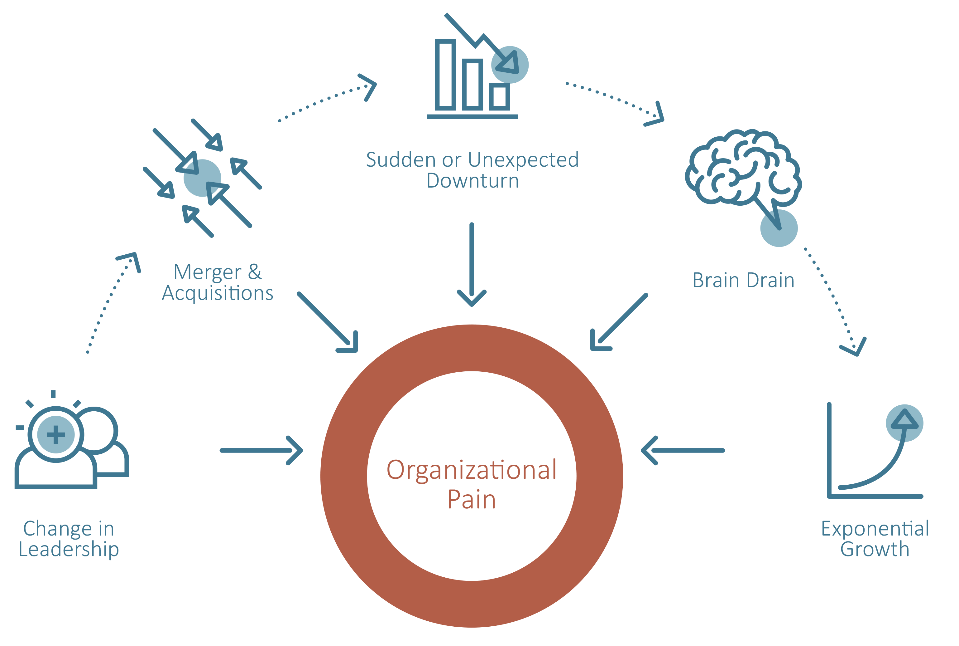
Are You Facing Any of These Drivers of Corporate Culture Change?
Beyond changes in corporate strategy, most organizations that need to shift their culture are reacting to one or more common drivers of cultural change. Because strategy flows through people and culture to be executed effectively, shifts in leadership, business circumstances, or organizational priorities often necessitate a rethinking of how work gets done.
Any organization struggling to consistently execute strategy should take a hard look at its culture. While most could benefit from increased productivity, a distinctive competitive advantage, and smoother operations, many have yet to treat culture as a strategic lever.
Ask yourself: Have you assessed whether your organizational culture is aligned with your strategy?
Common Drivers of Corporate Culture Change
The Bottom Line
Be alert to these drivers of corporate culture change — they often signal or create cultural misalignment. When they occur, resist the temptation to move straight from strategy design to action planning. Take the time to ensure that how work gets done (the “how”) is fully aligned with your strategic goals (the “what”). Addressing culture proactively dramatically increases your likelihood of successful strategy execution.
To learn more about how to handle drivers of corporate culture change, download A Purposeful and Aligned Organizational Culture – Your DNA for Success

Tristam Brown is an executive business consultant and organizational development expert with more than three decades of experience helping organizations accelerate performance, build high-impact teams, and turn strategy into execution. As CEO of LSA Global, he works with leaders to get and stay aligned™ through research-backed strategy, culture, and talent solutions that produce measurable, business-critical results. See full bio.
Explore real world results for clients like you striving to create higher performance